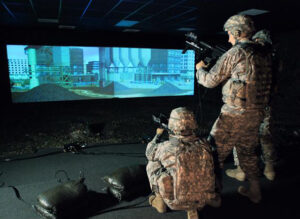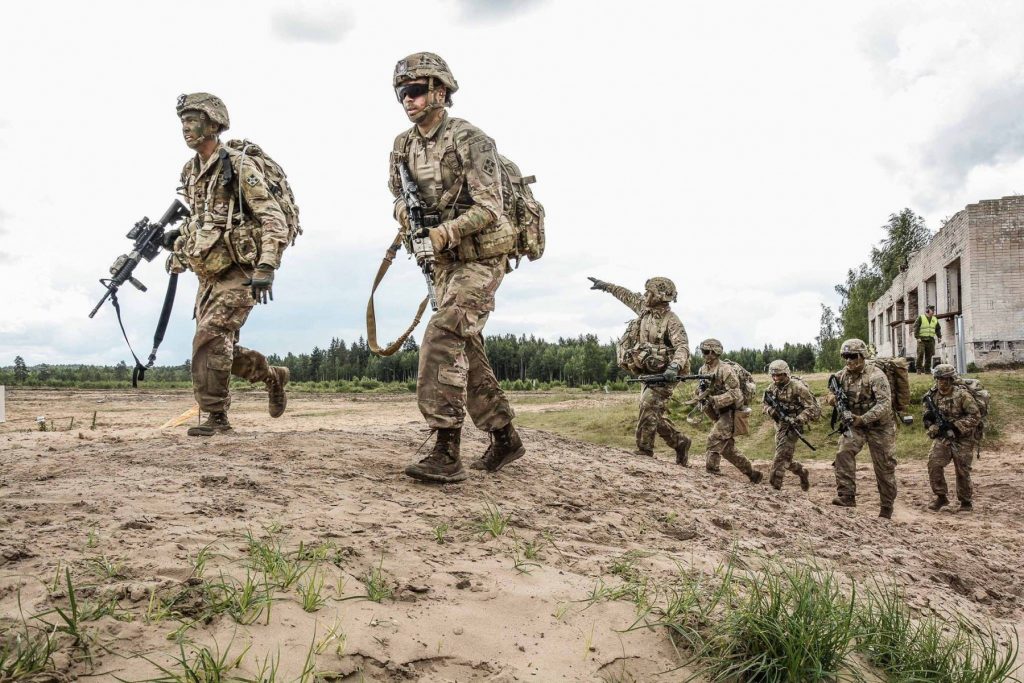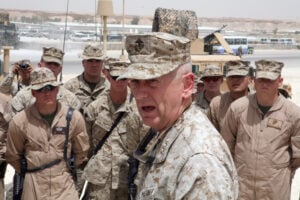Mattis’s Infantry Task Force: Righting ‘A Generational Wrong’
Posted on
Retired Maj. Gen. Bob Scales is the former commandant of the Army War College, a Vietnam veteran (and recipient of the Silver Star for valor) turned military historian and futurist. He’s also one of the fathers of Defense Secretary Jim Mattis’s Close Combat Lethality Task Force to reform the infantry. In this op-ed, Scales goes into the task force’s achievements, its rationale, and the decades of unnecessary bloodshed it seeks to end. — the editors
Eight months ago, Defense Secretary Jim Mattis created the Close Combat Lethality Task Force to right a generational wrong. A retired Marine Corps infantryman himself, Mattis understood that America’s close combat forces, consisting of less than four percent of those in uniform, had suffered more than ninety percent of American combat deaths since the end of World War II. His intent: to make our infantry formations dominant on tomorrow’s battlefields.
Most efforts at reforming the Pentagon are premised on the development and acquisition of things — guns, planes, ships, missiles, satellites, all at every-increasing expense. But close combat demands far more than superior weaponry. At its essence, the close fight is a uniquely human experience that matches one small unit against another in a duel to the death. Victory comes to the side that has superior will, cunning, intelligence, tenacity, and skill at arms.
Thus technology is only one of the Task Force’s five lines of effort. Three others embrace the intangibles of the human dimension: personnel policy, training, and human performance in combat. The fifth is a future-gazing effort to leverage emerging, as-yet unproven science — from new lightweight materials to cognitive performance — to achieve leap ahead advantages on tomorrow’s battlefields.
The Task Force’s main line of effort is devoted to recruiting, selecting, training and acculturating superior infantrymen. We can’t go back to the days of “Willie and Joe,” the iconic World War II caricatures of poorly-treated and poorly trained doughboys. From now on, infantry will be treated as an “excepted” category, a force set apart from other arms and the usual personnel bureaucracy. Initiatives the Task Force has launched or is considering include a new system for evaluating recruits for the special attributes of close combat soldiers; increasing the time leaders spend in a specific small unit before being reassigned; adding additional professional schooling for small unit noncommissioned officers; extending the training time for new recruits; selective bonuses and incentives to serve in the close combat branches and policies that exempt close combat units from the distractions of non infantry duties.

Army marksmanship simulator. Such systems can train specific tasks but not the whole, highly physical skillset required for infantry combat, which is why the Pentagon is developing more immersive “augmented reality” techniques.
Training is critical: Secretary Mattis has said infantrymen must fight “25 bloodless battles” before they first see combat. Traditional training methods will never adequately prepare a close combat soldier for the horrific shock of his first time under fire. Thus a first priority of the Task Force is to develop small unit simulations that replicate the shock, uncertainty, chaos and fear of the close fight. The team is well along in creating place virtual environments enhanced by augmented reality technologies, immersing infantrymen inside simulations that offer the repetition with variation, scenario after stressful scenario with new surprises each time, a truly transformational training experience.
The Task Force is dedicated to the premise that close combat soldiers are the ultimate athletes who if, unprepared or unfit, might pay the ultimate price in defeat. Thus the Task Force is dedicated to replicating an NFL sports science regime wherein professional fitness professionals and therapists will become integral to a close combat unit’s training.
Human performance research for professional athletes, pilots and astronauts has come a long way over the past few decades. Not so much for close combat soldiers and Marines. A key objective of the Task Force is to exploit recent advances in performance science in order to enhance the ability of infantrymen to excel in the deadly skills of close combat. Human performance initiatives include an expansion of the Army’s effort to fully instrument infantrymen’s bodies with sensors and feedback devices to track a soldier’s physical and psychological condition in combat. The Team is preparing an enhanced series of programs similar to the Army’s “H2F” heath and fitness initiative that will optimize the ability of soldiers to perform under the extreme stress of close combat.
While human science and personnel policies form the decisive elements of small unit reform, the tools of the infantryman’s trade are still important. Two technologies seem to offer the greatest potential for achieving dominance in the close fight:
- First, for almost half a century, America’s ground forces have been equipped with inferior small arms, the 5.56 caliber, gas-impingement assault weapons of the M16/M4 family. A top priority of the Task Force has been a technological leap ahead in individual weapons technology. The ground services are well along in the development of a next generation family of rifles and machine guns that will be capable of penetrating peer competitors’ advanced body armor at extreme ranges with extraordinary accuracy.
- But technological dominance in the close fight is not solely a function of superior small arms: victory in the close fight goes to the side that can see, sense, and shoot the enemy first. So the Task Force has dedicated most of its effort to new technologies to give an Army or Marine infantryman a set of digital glasses, a “Heads Up Display” with built-in night vision, tactical data, and targeting cross-hairs linked to his weapon’s sight. This HUD technology will allow the infantryman not only to engage the enemy with great precision and lethality, but also to see a virtual display of essential combat information such as suspected enemy positions and the location of nearby friendly units.
The acquisition community can learn a great deal from the success of the Close Combat Lethality Task Force. From its inception, the Task Force was built around a cadre of combat-experienced active and retired close combat officers and noncommissioned officers. Thus only those with “skin in the game” — not acquisition executives– were made the key decision-makers in this enterprise.
Then, to avoid unnecessary bureaucratic distractions, the Task Force meets the Secretary’s intent narrowly by focusing only on close combat small units. The Task Force charter was limited to those programs and initiatives that could be achieved within a prescribed period by exploiting existing human and materiel sciences. Most importantly, from the beginning the Task Force leadership was dedicated to catalyzing a common effort among the ground services: Army, Marines, and Special Operations.
The lesson learned so far is clear. A small team like the Task Force can accomplish miracles, even in today’s constrictive and bureaucratically stultifying environment — if the leaders of the effort have skin in the game and if they are empowered to leap over the impediments of restrictive regulations and polices in their quest to keep alive those most likely to die. Success comes from a holistic approach to reform that wraps together into a single transformational effort all the elements that guarantee overmatch in combat: technology, training, policies, regulations, and, most crucially, the human spirit.
Subscribe to our newsletter
Promotions, new products and sales. Directly to your inbox.


